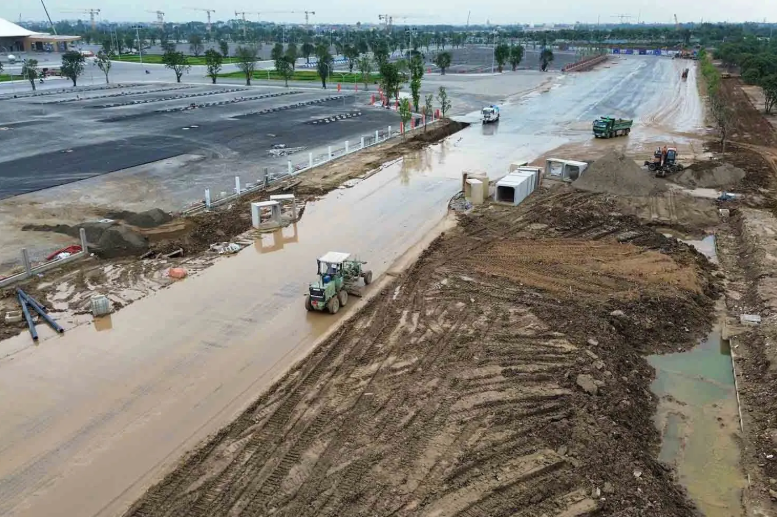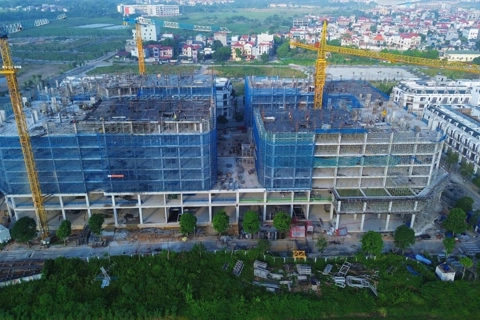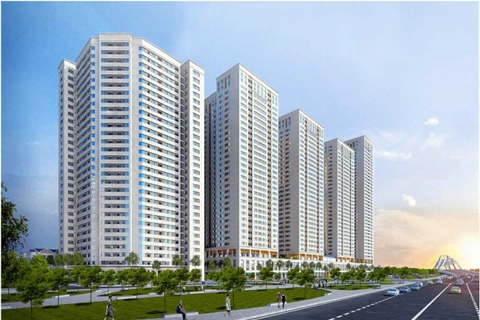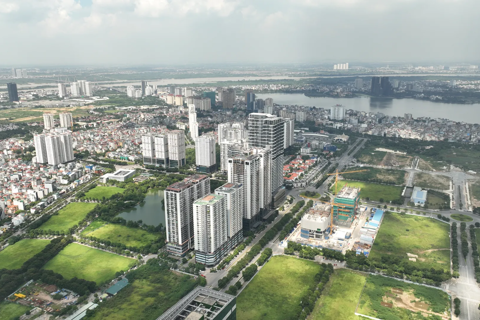Hanoi fast-tracks key transport projects to boost connectivity
If these projects stay on track, Hanoi is poised to transform into a modern, dynamic metropolis within five years, befitting its role as the capital and a key engine of national growth.
THE HANOI TIMES — Determined to make 2025 a breakthrough year for infrastructure, Hanoi is pushing ahead with a series of major transport projects, signaling a new era of rapid development for the capital and the broader Capital Region.

Construction site of the Tu Lien Bridge approach road in Dong Anh District. Photo: Huu Chanh/The Hanoi Times
Over the past few months, Hanoi has commenced construction on several major projects, including the Tu Lien Bridge and its connecting roads, the Ring Road No. 3.5 interchange with Thang Long Boulevard and the Ba Sao-Bai Dinh trunk road.
Phan Truong Thanh, Head of the Finance and Investment Division at Hanoi's Department of Construction, said that the city is accelerating preparations to break ground on additional bridges by the end of 2025, including the Thuong Cat, Ngoc Hoi, Tran Hung Dao, Hong Ha, Me So, and Van Phuc bridges.
“It’s been decades since Hanoi has taken on so many large-scale transport projects at once,” Thanh noted. "This reflects the city's strong determination to upgrade its core transport infrastructure significantly and drive comprehensive socio-economic development for the city itself and the broader Capital Region."
The driving force behind this infrastructure surge is the 2024 Capital Law, which has cleared long-standing policy bottlenecks.
Le Trung Hieu, Deputy Director of the Hanoi Department of Finance, said the law, combined with central resolutions and government directives, has given the city greater autonomy in investment decisions, helping reduce delays in site clearance, bidding, and approval processes.
“Many prolonged obstacles in site clearance, bidding, contractor selection, and investment approval have been addressed,” Hieu said. Hanoi has now been granted greater autonomy to make key investment decisions and take responsibility for them, helping to accelerate project timelines from preparation through to execution.
With these policy roadblocks removed, Hanoi has launched its infrastructure push with remarkable urgency.
Hanoi has implemented a ‘green lane’ mechanism to resolve investment-related issues within 24 hours, aiming to enhance transparency and efficiency. The Hanoi People’s Committee also holds weekly meetings to monitor progress, accelerate implementation, and promptly address challenges during project planning and execution.
A prime example is the Tu Lien Bridge and its connecting roads (from the intersection with Nghi Tam Road to the intersection with Truong Sa Road).
Thanks to strong political commitment and support from central ministries, the project broke ground just over five months after preparation began, fully compliant with regulations and on schedule.
Human resources critical for Hanoi’s development
While Hanoi’s infrastructure investment is advancing steadily, experts warn that significant challenges remain. Sustaining momentum, ensuring quality, and achieving project success will require substantial human resources.
Key agencies, including the Department of Construction, the Transport Works Project Management Unit, the Urban Railway Management Board, and local authorities overseeing site clearance, bear considerable responsibility in managing and executing these projects effectively.

Design of Tu Lien Bridge.
Leaders from both Hanoi and the central government have praised the focus, determination, and quality of work by the municipal Transport Works Project Management Unit in preparation for major projects such as the Ba Sao – Bai Dinh road and the Tu Lien Bridge.
With plans to start construction on seven bridges crossing the Red River in 2025 and to complete several key transport projects on time, the unit is under enormous pressure.
‘Beyond policy, capital, and land clearance, human resources will play a decisive role in the success or failure of these projects. People are among the most critical drivers of Hanoi’s infrastructure development,' said Thanh from the Department of Construction.
Many experts agree that, despite the heavy and complex workload, the project implementation units have got off to a good start, showing full commitment to investment and construction.
Transport expert Vu Hoang Chung said that maintaining and enhancing this momentum throughout the entire project lifecycle is what matters now.
'Coordination between agencies and local governments must be efficient and seamless to prevent delays caused by waiting for approvals or actions from other parties,' he noted. In particular, Chung said that site clearance and the relocation of surface and underground structures must be carried out urgently by local authorities to ‘make room’ for construction units to accelerate work day by day.
Hanoi, along with the rest of the country, is entering a new phase of development, with a streamlined government apparatus aimed at improving efficiency and effectiveness.
This also means heavier responsibilities and pressure for each agency and locality, requiring the highest level of dedication and accountability from every team and individual.
If the projects stay on track, Hanoi is expected to present a new, modern and dynamic image within the next five years, befitting its role as the capital and a leading driver of national socio-economic development.











